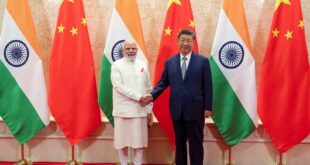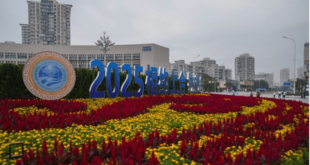Armenia’s rugged terrain at the South Caucasus nexus — bridging Europe, Asia, and the Middle East — teeters between peril and promise. It straddles a hazardous crossroads of vital trade corridors, where it could emerge as a connector economy in a fracturing world of geo-economic blocs.
Stability here is engineered, not bestowed, through deft statecraft and infrastructure — rails, roads, and pacts transforming a precarious perch into leverage. Success demands navigating rivalries, upgrading grids, and forging ties, much as Poompuhar’s ancient docks bound empires.
The crossroads that Armenia lies in close proximity to are:
Middle Corridor (Trans-Caspian International Transport Route): Armenia is not currently integrated into this multimodal route connecting China to Europe, due to closed borders with Azerbaijan and Turkey. But its proximity means it could potentially connect as regional relations improve.
India-Middle East-Europe Economic Corridor (IMEC): This corridor does not directly involve Armenia, but its broader impact on regional trade dynamics could indirectly benefit Armenia by aligning its infrastructure with neighbouring countries like Georgia.
International North-South Transport Corridor (INSTC): Armenia is directly positioned along this corridor connecting India to Europe via Iran, Georgia, and Russia, making it a key transit country.
Armenia’s crossroads position pulses with potential. The INSTC threads India to Europe via Iran, Georgia, and Russia, with Armenia as a key link—highways humming from Mumbai to Moscow.
The Middle Corridor (Trans-Caspian Route) lies close, blocked by sealed borders with Azerbaijan and Turkey; normalisation could pry it open and drive trade and economic development.
The IMEC ripples nearby, aligning Armenia’s dry land ports with Georgia’s wet ports on the Black Sea. Yet geopolitical rifts, ageing infrastructure, and mistrust shackle this promise. Like the Chenab River’s dams, Armenia’s ascent rests on technical sinew and diplomatic bridges.
Andorra’s Echo

Andorra, cradled in the Pyrenees, thrives under France and Spain’s co-principality. Its unique co-princes — France’s President and Urgell’s Bishop — shield a landlocked speck with no army. Proximity ensures security; EU customs union ties drive trade and tourism—millions flock yearly.
This centuries-old protectorate arrangement offers Andorra a blend of autonomy and protection. Spain and France guarantee Andorra’s security and oversee its foreign affairs, while Andorra maintains its own government for internal matters. This arrangement provides several key benefits:
1. Security: As a small nation with no military, Andorra relies on its neighbours for defence, eliminating the need for a costly armed force.
2. Economic Stability: Proximity to Spain and France facilitates trade and economic integration. Andorra is part of the EU customs union, boosting its economy through commerce and tourism.
3. Tourism Boost: Andorra’s picturesque location and unique political status draw millions of visitors annually, forming a cornerstone of its economy.
4. Political Stability: The co-principality has provided a stable governance framework, avoiding internal upheaval or external domination.
Andorra’s geographic proximity to its protectors and their aligned interests in maintaining its stability are the foundation of these advantages. This political compact blends autonomy, stability, and clout without sovereignty’s full weight, rooted in aligned interests and adjacency. It’s a lens for Armenia’s own strategic calculus.
Yet Armenia occupies an altogether more volatile context. Armenia’s reality bristles with tension. Bordered by Turkey, Georgia, Azerbaijan, and Iran, it bears scars — the Armenian Genocide, Nagorno-Karabakh’s wound.
Russia’s Gyumri base, leased until 2044, anchors defence. But its failure against Azeri aggression frayed trust, nudging Armenia from the CSTO. India steps in with arms and cultural ties, though its Caucasian foothold is slim.
A joint Russia-India protectorate, echoing Andorra, is tempting: Russia’s muscle and India’s clout could deter foes, diversify trade, and amplify Yerevan’s voice. Cultural exchanges enrich, and dual patronage curbs meddling — Georgia’s woes warn of unchecked influence. Yet India’s distance, Russia’s jealousy, and Armenia’s sovereignty resist; Turkey and Azerbaijan might balk, snagging EU ties.
Practical Limits
Andorra’s seamless shield hinges on Spain and France’s proximity—Armenia lacks such fit. India, focused on Bhutan’s skies, can’t match Russia’s regional grip. Moscow guards its turf; Armenia’s hard-won independence recoils from surrender.
A formal protectorate treaty — Bhutan’s Indian model as precedent — stumbles on geography, strategy, and sovereignty norms. Like the South China Sea’s contested waters through which trillions of dollars in international trade flow, Armenia’s position courts leverage and friction.
Armenia opts for agility over subjugation. It balances Russia’s bases with EU trade, U.S. aid, and India’s drones. Deepening ties with Russia and India—without ceding reins—mirrors Andorra’s multi-patron dance: joint drills harden defences, India’s markets cut reliance on Moscow, and their heft boosts diplomacy.
The Five Power Defence Arrangements (FPDA)—Australia, Malaysia, New Zealand, Singapore, and the UK — offers a precedent. Born in 1971 from Commonwealth roots, its consultative pact stabilizes via dialogue, not force.
Armenia could weave this with Iran, Russia, and India, but divergences snag: Russia’s yoke, Iran’s Western feuds, and India’s eastward tilt lack FPDA’s unity. Still, a flexible forum aligns with Armenia’s multi-vector play.
Project IRIA: The Connectivity Engine
Project IRIA (India-Russia-Iran-Armenia) can fuse security and infrastructure to vault Armenia into a nexus role. Modelled on the FPDA’s consultative pact, it binds these powers to enhance Armenia’s defences — joint drills, missile shields, and drone patrols deterring threats.
Simultaneously, it funds and sustains a north-south corridor piercing Armenia, capped by special charter zones (SCZs) that mirror Schiphol Airport’s size of 2787 hectares or 27 square kilometres. This infrastructure initiative can be underwritten by agreements to consult in the even of a perceived threat or armed attack, underwriting the security of such infrastructure.
The southern zone, a Russia-India-Iran-Armenia joint venture (JV), can weld Russian logistics and Iran’s India-backed Chabahar port to Armenia’s infrastructure grid. The northern zone, an India-Iran-Armenia JV that borders Georgia, pairs India’s tech and trade with Georgian rail infrastructure. The central hub, an India-Iran-Russia-Armenia JV, stitches them together, a lynchpin syncing the INSTC with the Middle Corridor and IMEC and creating a geo-economic interchange of trade flows.
These zones — each a humming nexus of rails, warehouses, and digital relays — channels cargo and trade from Bandar Abbas to Tbilisi, slashing transit times and swelling fees. This complements the current development funded by the EBRD and accelerates the development of Armenia’s North-South Road Corridor, building upon existing efforts to ease trade at a Eurasian nexus.
The INSTC’s spine links to the Middle Corridor’s east-west flow, while IMEC’s trade winds tie Armenia to EU markets via Georgia. Russia secures its Caucasian flank; Iran skirts sanctions with new arteries; India plants a trade flag in the Caucasus, counter-balancing China’s Belt & Road.
Armenia can transform — transit revenue, investment, and EU Common Market access recast it as a connector economy. Project IRIA engineers stability through concrete and code, binding partners in mutual gain, forging interdependence both subtle and stark.
The Indus Waters Treaty exemplifies how engineering details can transform potential conflicts into cooperation. When Pakistan challenged India’s Kishanganga hydroelectric project in 2010, the resolution emerged not from political maneuvering but through technical negotiations focused on flow rates, reservoir capacities, and power generation schedules.
Now, hydroelectric projects along the Chenab and Jhelum rivers continue this collaborative approach. This demonstrates stability is often engineered, rather than merely brokered. Such agreements are underwritten by both political will and the technical infrastructure that facilitates cooperation.
Infrastructure as Anchor
Beyond IRIA, Armenia can leverage broader corridors. The INSTC’s rails — from Bandar Abbas to Gyumri — pulse with cargo; the Middle Corridor beckons if borders thaw; IMEC’s shadow spurs Georgia’s ports. Linking these with Iran, India, and Russia binds economic and security stakes. Trade slashes costs, investment upgrades grids, and shared rail guards soften rivalries, birthing soft security.
Yet Russia seeks dominance, Iran evades sanctions, and India guards autonomy; governance—track gauges, tariffs—tests will. Corridors risk conflict flashpoints, demanding balance, akin to Arctic routes. IRIA amplifies this, its joint enterprises anchoring trust where diplomacy wavers.
Armenia will shun Andorra’s protectorate mould — Spain and France’s sovereign shield fits poorly in the volatile South Caucasus. A Russia-India umbrella tempts with security and trade, but distance and sovereignty inhibit it.
An FPDA-style forum with Iran, Russia, and India, turbocharged by Project IRIA, offers Yerevan heft — consultative, not commanding — and bolsters defences, trade, and clout. Iran’s Middle Eastern gaze, Russia’s grip, and India’s tilt will strain cohesion, yet the strategic nexus it forges is too important to ignore and each gains a stake in the welfare and security of Armenia.
Infrastructure anchors this vision: INSTC, Middle Corridor, IMEC, and IRIA’s zones generate revenue, draw capital, and knit trust—arteries doubling as security veins. Challenges—priorities, governance, conflict risks—persist.
Like Poompuhar’s ports outlasting empires, should Armenia choose to engineer choices — rails, pacts, patrols — and ensure they endure, it has the capacity to turn hazard into a competitive edge in a fractured world.
 Geostrategic Media Political Commentary, Analysis, Security, Defense
Geostrategic Media Political Commentary, Analysis, Security, Defense






You must be logged in to post a comment.